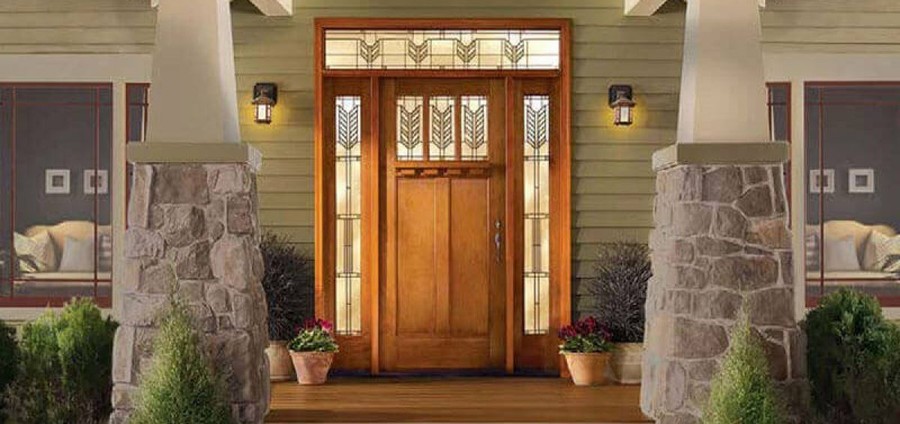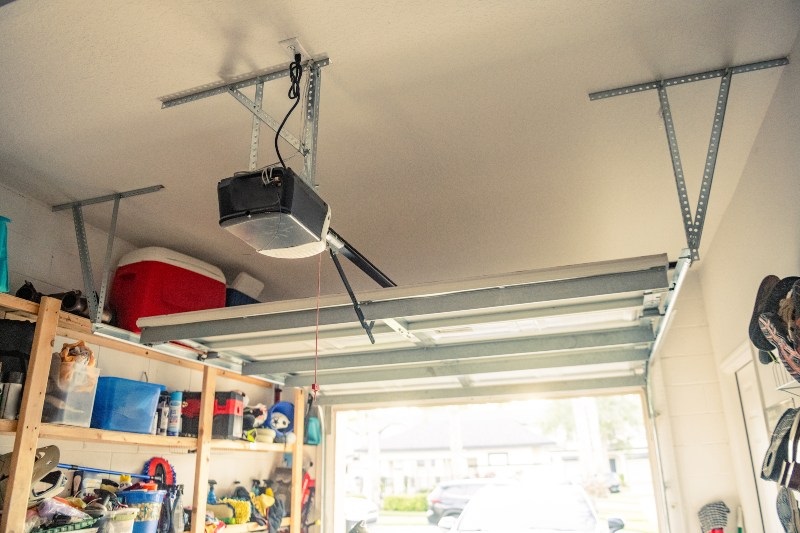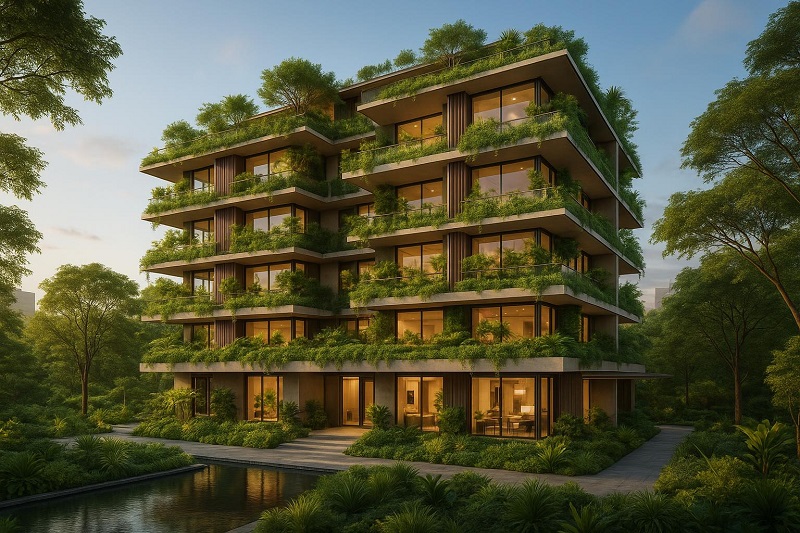When it comes to choosing the right front door for your home, the decision often boils down to materials that balance aesthetics, durability, and budget. Fiberglass and wood doors are two popular options, each offering unique benefits and drawbacks. Whether you’re building a new house, renovating an old one, or simply upgrading for better curb appeal, understanding the differences between fiberglass and wood doors can save you time, money, and headaches down the line.
In this comprehensive guide, we’ll dive into the pros and cons of fiberglass doors versus wood house doors (haustüren), along with a detailed cost breakdown. We’ll explore everything from maintenance requirements to energy efficiency, helping you make an informed choice. By the end, you’ll have a clear picture of which material might suit your lifestyle, climate, and home style best. Let’s get started!
Understanding Fiberglass Doors
Fiberglass doors have gained popularity in recent years as a modern alternative to traditional materials. Made from a composite of glass fibers embedded in resin, these doors are engineered for strength and versatility. They’re often designed to mimic the look of real wood, complete with grain patterns and stains, but without the natural vulnerabilities of organic materials.
One of the key appeals of fiberglass doors is their manufacturing process. The fiberglass shell is typically filled with a polyurethane foam core, which provides insulation and structural integrity. This makes them lightweight yet robust, ideal for entryways that see heavy traffic. Available in various styles—from sleek modern panels to ornate designs with glass inserts—fiberglass doors can fit seamlessly into contemporary, traditional, or even rustic home exteriors.
Homeowners in humid or coastal areas particularly favor fiberglass because it resists warping, rotting, and insect damage. Unlike natural materials, fiberglass doesn’t expand or contract dramatically with temperature changes, ensuring a consistent fit in the door frame year-round.
Understanding Wood Doors
Wood doors, on the other hand, have been a staple in home construction for centuries. Crafted from solid hardwoods like oak, mahogany, or pine, or sometimes engineered wood products such as veneered panels, they exude timeless elegance and warmth. Solid wood doors are prized for their natural beauty, with unique grain patterns that can be stained or painted to match any decor.
Engineered wood doors, which consist of a wood core layered with veneers, offer a more affordable option while maintaining much of the aesthetic appeal. These doors can be customized with carvings, moldings, and hardware, making them a favorite for historic homes or those seeking a custom look.
However, wood’s organic nature means it’s more susceptible to environmental factors. In regions with extreme weather, wood doors require regular upkeep to prevent issues like cracking or fading. Despite this, many people choose wood for its authenticity and the way it ages gracefully, adding character to a home over time.
Pros of Fiberglass Doors
Fiberglass doors shine in several areas, making them a top choice for practical homeowners. First and foremost, their durability is unmatched. These doors are resistant to dents, scratches, and impacts, which is perfect for families with kids or pets. Unlike wood, fiberglass won’t splinter or crack under pressure, ensuring longevity that can span decades with minimal wear.
Energy efficiency is another major pro. The foam core in fiberglass doors provides excellent insulation, helping to keep your home cool in summer and warm in winter. This can lead to noticeable savings on utility bills, especially in homes with large entryways. According to industry standards, fiberglass doors often achieve higher R-values (a measure of thermal resistance) compared to wood, making them a smart pick for energy-conscious buyers.
Maintenance is a breeze with fiberglass. A simple wipe-down with mild soap and water keeps them looking new, and they don’t require sealing or refinishing like wood does. They’re also highly resistant to moisture, mold, and pests, reducing the risk of costly repairs. For those in harsh climates—think rainy Pacific Northwest or sunny Southwest—fiberglass doors hold up without fading or peeling.
Aesthetically, modern fiberglass doors can replicate wood so convincingly that it’s hard to tell the difference from afar. Plus, they come in a wide range of colors and finishes, often with factory-applied stains that won’t chip.
Cons of Fiberglass Doors
Despite their advantages, fiberglass doors aren’t perfect. One downside is the initial feel—they can sometimes lack the substantial “heft” of solid wood, feeling lighter and less premium to the touch. This might deter those who prioritize a luxurious, heavy-duty entrance.
Customization options, while improving, are still somewhat limited compared to wood. Intricate carvings or unique designs might not be as feasible, and if damage does occur (though rare), repairs can be tricky and may require professional help rather than a simple sand and stain.
Fiberglass doors can also be prone to fading if exposed to direct sunlight without UV protection. Cheaper models might show color degradation over time, though high-end versions with baked-on finishes mitigate this. Finally, while they’re durable, extreme impacts could crack the surface, and replacements aren’t always straightforward.
Pros of Wood Doors
Wood doors bring an undeniable charm that’s hard to replicate. Their natural beauty is a standout pro—each door has its own grain and texture, creating a warm, inviting entrance that enhances curb appeal. Staining allows for rich, deep colors that evolve over time, adding personality to your home.
Customization is where wood truly excels. You can carve, engrave, or add decorative elements with ease, making it ideal for personalized designs. Wood also pairs beautifully with glass inserts or sidelights, allowing natural light to flood your entryway.
In terms of sound insulation, solid wood doors often outperform fiberglass, muffling outdoor noise for a quieter home interior. They’re also biodegradable and sourced from renewable materials, appealing to eco-friendly homeowners. With proper care, a well-made wood door can last generations, becoming a family heirloom.
Wood’s tactile quality is another plus; the solid weight and smooth finish provide a sense of quality and security that’s psychologically reassuring.
Cons of Wood Doors
The main drawbacks of wood doors stem from their vulnerability to the elements. Moisture is the biggest enemy—exposure to rain or humidity can cause swelling, warping, or rotting, leading to drafts and energy loss. In dry climates, cracking and splitting are common without regular sealing.
Maintenance demands are high; wood doors need periodic staining, varnishing, or painting to protect against UV rays, insects, and weathering. Neglect this, and you’ll face expensive repairs or premature replacement. Pests like termites love wood, adding another layer of concern.
Security can be an issue with softer woods, as they’re easier to breach than fiberglass. Additionally, wood doors tend to be less energy-efficient without added insulation, potentially increasing heating and cooling costs.
Cost Breakdown: Fiberglass vs. Wood Doors
Let’s talk numbers—cost is often the deciding factor. Entry-level fiberglass doors start around $200 to $500 for basic models, but expect to pay $800 to $2,500 for high-quality versions with features like decorative glass or enhanced insulation. Installation adds $200 to $500, depending on your location and door size. Over time, low maintenance keeps long-term costs down, with potential energy savings offsetting the upfront price.
Wood doors vary widely. Solid hardwood options like oak or mahogany can range from $500 to $3,000 or more for premium, custom pieces. Engineered wood doors are cheaper, starting at $300 to $1,000. Installation is similar, but factor in ongoing maintenance: sealing kits cost $50 to $100 annually, and professional refinishing every few years might run $200 to $500.
In a head-to-head comparison, fiberglass often wins on value. A mid-range fiberglass door ($1,200 installed) might outlast a comparable wood door ($1,500 installed) by 10-20 years with less upkeep. However, if aesthetics trump everything, wood’s higher initial investment could be worthwhile. Regional factors play a role—wood might be pricier in areas with high humidity due to faster degradation.
Don’t forget hidden costs: Wood doors in extreme climates may require storm doors for protection, adding $300 to $800. Fiberglass, being more versatile, rarely needs extras.
Factors to Consider When Choosing Between Fiberglass and Wood
Your choice should align with your home’s needs. Climate is crucial—if you live in a wet or variable weather area, fiberglass’s resistance to elements makes it superior. For milder regions, wood’s beauty might outweigh its cons.
Consider your home’s style: Traditional or Victorian homes suit wood’s classic look, while modern builds pair well with fiberglass’s clean lines. Budget for the long haul—fiberglass saves on maintenance, but wood offers resale value through timeless appeal.
Security and energy ratings matter too. Look for doors with multi-point locks and high ENERGY STAR ratings. Finally, think about warranty: Fiberglass often comes with 10-20 year guarantees, while wood warranties are shorter due to natural wear.
Maintenance and Durability Comparison
Maintenance for fiberglass is minimal—annual cleaning and occasional hardware checks suffice. Durability-wise, they withstand daily abuse without fading.
Wood requires more effort: Inspect for cracks seasonally, reseal every 1-2 years, and refinish every 5-7 years. Durability depends on the wood type—hardwoods like teak last longer but cost more. Overall, fiberglass edges out in longevity for most scenarios.
Energy Efficiency and Environmental Impact
Fiberglass doors excel in energy efficiency thanks to their insulating cores, potentially reducing bills by 10-20%. Wood, while naturally insulating, often needs weatherstripping to match.
Environmentally, wood is renewable if sustainably sourced, but fiberglass production involves non-biodegradable materials. However, fiberglass’s longer lifespan means less frequent replacements, reducing waste.
Aesthetic Appeal and Customization Options
Wood wins for sheer beauty, with endless staining possibilities. Fiberglass mimics wood effectively but lacks the authentic warmth. Both allow for glass panels, but wood offers more intricate detailing.
Conclusion: Which Door is Right for You?
Ultimately, fiberglass doors offer practicality, low maintenance, and cost savings, making them ideal for busy households or challenging climates. Wood doors provide unmatched elegance and customization, perfect for those who value tradition and are willing to invest in upkeep.
Weigh your priorities—durability vs. aesthetics, budget vs. long-term value—and consult a professional installer. Whichever you choose, a well-selected door enhances your home’s security, efficiency, and style for years to come.











